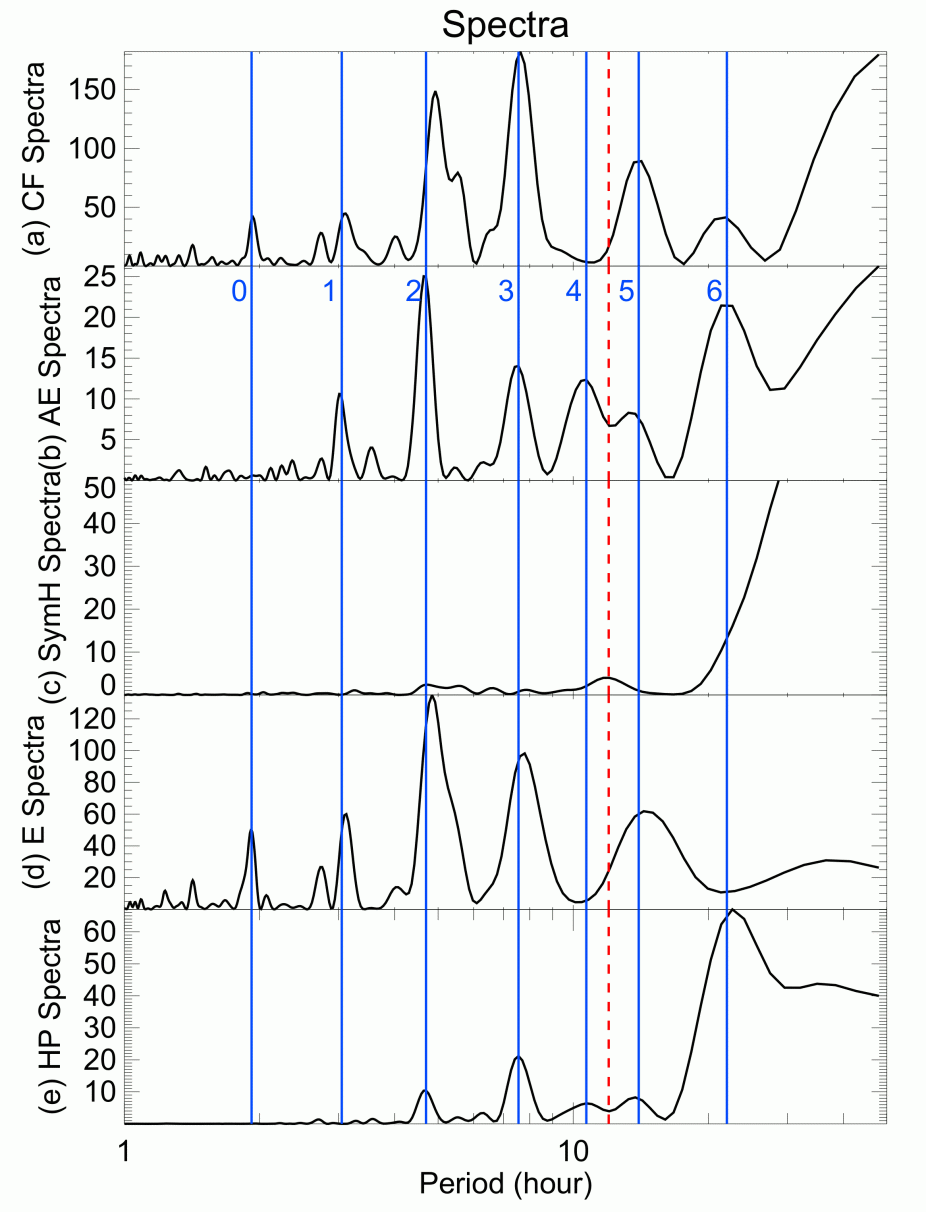Publication Name: JGR Space Physics; First HAO Author: Wenbin Wang; Authors as listed in article: Yongliang Zhang, Larry Paxton, Wenbin Wang, and Chaosong Huang
TIMED/GUVI observed thermospheric column ∑O/N2 depletion in both hemispheres in March 2017. This long duration O/N2 depletion started with a geomagnetic storm between March 1 and 21, 2017 which was caused by large periodic variations in interplanetary magnetic field (IMF) and a high solar wind speed, thus likely associated with a solar wind corotating interaction region (CIR). The storm lasted for 20 days. The dominant periods seen in the solar wind and magnetosphere coupling function (CF) were around 1.9, 3.0, 4.7, 7.6, 14.0 and 22.0 hours during the peak of the storm (March 1 and 2). The major periods in geomagnetic activity index AE variations were around 3.0, 4.7, 7.6, 10.7, 14.0 and 22.0 hours. Auroral hemispheric power (HP) also showed periodic variations similar to those of AE, except for the 3.0-hour variation due to a low sampling rate in HP data. SymH data didn’t show the periodic variations seen in AE but showed a weak 12-hour periodic variation which was also seen in the periodogram of solar wind dynamic pressure. There was a weak AE and HP periodic variation with a 10.7-hour frequency that was not observed in CF or any individual solar wind parameters or IMF components.

These results suggest that (1) the oscillating IMF, as evident by the CF, pumped energy and mass periodically into the magnetosphere and the polar ionosphere, creating a slow storm recover and a long lasting O/N2 depletion, (2) the high latitude magnetosphere (AE and HP) responded to the solar wind and IMF variations directly, (3) SymH did not show any direct periodic responses, likely due to the fact that the ring current was resulted from the accumulative effects of solar wind and IMF drivers, (4) the 10.7-hour variations in AE and HP were likely due to magnetospheric internal processes.